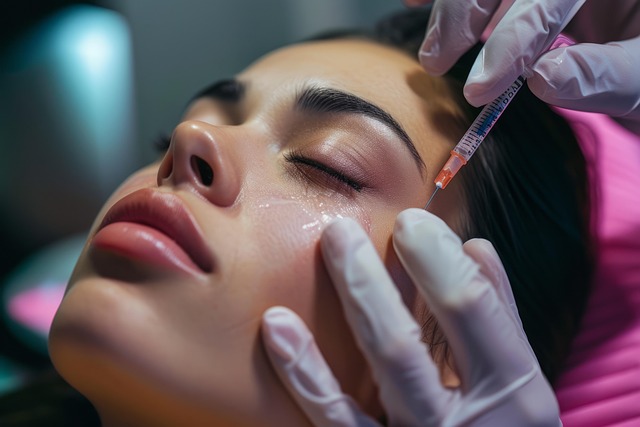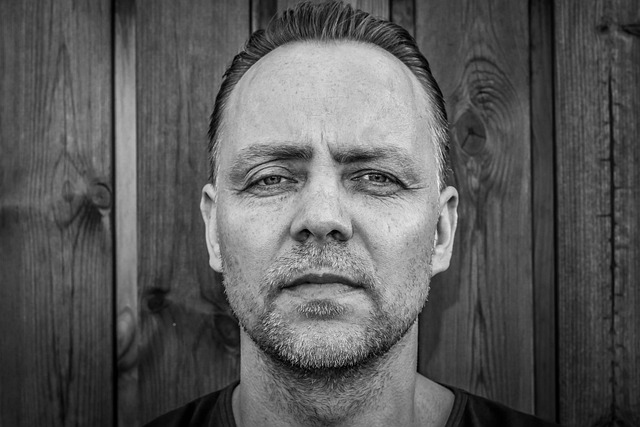Botox for facial contouring is a non-invasive aesthetic procedure using botulinum toxin (Botox) injections to temporarily paralyze muscle groups, reducing wrinkles and redefining features like cheekbones and jawlines. Results are visible within 24-72 hours, lasting 3-6 months. Ideal candidates have mild to moderate asymmetry or volume loss, with realistic expectations and good health. Potential side effects include temporary discomfort, redness, swelling, and muscle weakness, but qualified practitioners minimize risks. Recovery is swift, with results optimized through gentle skincare and follow-up care. While not permanent, Botox provides a safe, effective way to enhance natural beauty without surgery.
“Discover the transformative power of Botox for facial contouring, a non-invasive procedure revolutionizing cheek and jawline shaping. This comprehensive guide delves into the intricacies of using Botox to redefine facial features. From understanding its mechanism to exploring benefits, science, and selection criteria, we cover all you need to know. Learn about the recovery process, maintenance, and potential risks associated with this popular aesthetic treatment, offering a clear path to achieving your desired contour.”
Understanding Botox for Facial Contouring

Botox for facial contouring has emerged as a popular and non-invasive aesthetic procedure, offering a subtle yet effective way to enhance one’s natural beauty. This treatment utilizes botulinum toxin, commonly known as Botox, which is injected into specific muscle groups in the face. By temporarily paralyzing these muscles, Botox can reduce the appearance of facial lines and redefine cheekbones and jawlines. It’s particularly appealing for those seeking a more chiseled and defined look without the need for surgery.
The process involves precise injections to target areas like the masseter (jaw) and temporal (cheek) muscles. Skilled practitioners ensure minimal discomfort during the procedure, often using topical anesthetics. Results usually become visible within 24-72 hours, with optimal contouring effects lasting from 3-6 months. This makes Botox an excellent choice for individuals wanting a temporary yet noticeable facial contour improvement.
Benefits of Using Botox for Cheek and Jawline Contouring

Botox for facial contouring, particularly on the cheeks and jawline, offers a non-invasive approach to achieving a more defined and balanced look. One of its key benefits is the ability to temporarily reduce the appearance of sagging skin and jowls, providing a lifted and rejuvenated effect. This treatment can be highly effective for individuals seeking a subtle yet noticeable enhancement without the need for surgery or extensive downtime.
Additionally, Botox helps minimize facial wrinkles and fine lines around the cheeks and jawline, creating a smoother and more contoured appearance. By relaxing specific muscle groups, it prevents excessive movement that contributes to the formation of creases and wrinkles over time. This not only improves aesthetics but also promotes a more youthful and refreshed overall look.
The Science Behind Botox Treatments

Botox, short for botulinum toxin, is a protein produced by bacteria that has found its way into the realm of aesthetics. When injected into specific facial muscles, it temporarily paralyses them, leading to a significant effect in facial contouring. This procedure, known as Botox for cheek and jawline contouring, is gaining popularity as a non-surgical alternative to enhance one’s natural features or achieve a desired look.
The science behind Botox treatments involves a precise injection of the toxin into targeted muscle groups. It disrupts signals from the nervous system to these muscles, resulting in reduced muscle activity. This leads to a smoothing effect on the skin, allowing for enhanced cheekbones and jawline definition. The treatment is particularly effective for individuals looking to sculpt their facial features without invasive surgery or extensive downtime.
How Botox Shaping Works on the Cheeks and Jawline

Botox for facial contouring, particularly on the cheeks and jawline, works by temporarily paralyzing specific muscles responsible for creating unwanted lines and defining facial features. When injected in strategic areas, Botox smooths out the skin, enhancing the natural shape of the face. This non-surgical approach targets the deep, underlying muscles that contribute to the development of dynamic lines and jutting angles around the cheeks and jawline.
The procedure involves precise injections of Botox into key muscle groups, carefully selected by a trained professional. As the Botox takes effect, it relaxes these muscles, preventing them from contracting and causing the facial contours to soften and redefine. This results in a more balanced, sculpted appearance, without the need for surgical incisions or extensive downtime associated with traditional cosmetic procedures.
Selection Criteria for Botox Contouring Procedures

When considering Botox for cheek and jawline contouring, several factors come into play in determining suitability. Ideal candidates are individuals with mild to moderate facial asymmetry or volume loss in these areas, seeking a non-surgical approach to enhance their features. It’s important to have realistic expectations; Botox is not a permanent solution and results will vary based on muscle mass, skin thickness, and individual healing. During the consultation, a qualified healthcare provider will assess your specific concerns, medical history, and overall facial structure to ensure Botox for facial contouring is the right choice.
Key selection criteria include good general health, the absence of any bleeding disorders or medications that may interfere with clotting, and no active infections at the proposed injection sites. It’s crucial to disclose any allergies or previous reactions to injections. Additionally, a commitment to follow post-procedure care instructions is essential for optimal results and minimizing potential side effects.
Potential Side Effects and Risks to Be Aware Of

When considering Botox for facial contouring, it’s crucial to be aware of potential side effects and risks. While Botox is generally safe when administered by a qualified healthcare professional, there can be temporary discomfort during injection, redness or swelling at the injection site, and muscle weakness in the treated area. These side effects are usually mild and subside within a few days.
One notable risk to keep in mind is asymmetry or an uneven appearance, especially if not performed by an experienced practitioner. Additionally, Botox for cheek and jawline contouring may cause difficulty chewing or biting temporarily. It’s also important to remember that the results of facial contouring with Botox are not permanent; effects typically last between 3-6 months, after which touch-up treatments may be necessary. Always discuss these risks openly with your healthcare provider before proceeding with any cosmetic procedure.
Recovery, Maintenance, and Follow-up Care

After receiving Botox for facial contouring, it’s crucial to understand that recovery is typically swift, with results visible within a few days. However, it’s essential to maintain a gentle skincare routine during this period. Avoid strenuous exercise and excessive sun exposure for the first week to prevent bruising and ensure optimal healing. Gentle cleansing and hydration are key.
Follow-up care is vital for achieving the desired cheek and jawline contouring results. Regular check-ins with your healthcare provider allow them to assess the treatment area, address any concerns, and offer guidance on maintenance. This may include recommendations for at-home care, such as specific serums or creams, to enhance the longevity of the results. Remember that while Botox offers significant benefits for facial contouring, it’s not a permanent solution; repeat treatments are necessary to maintain the desired effects.
